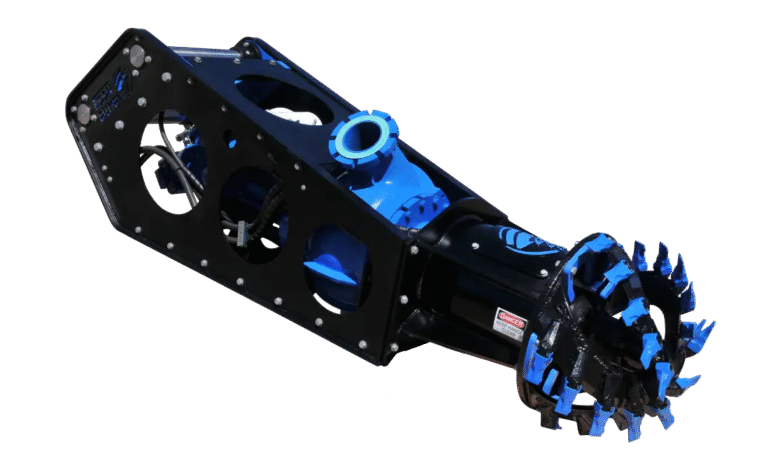Various Types of Dredging Equipment That Increase Productivity

Maintaining waterway depth, managing sediment buildup, and supporting marine construction projects all depend on efficient and reliable dredging operations. One of the key factors that directly impacts dredging success is the type of dredging equipment used. By selecting equipment tailored to specific site conditions and sediment characteristics, operators can significantly boost productivity while reducing operational delays.
Understanding the Role of Dredging Equipment
Dredging equipment plays a vital role in removing sediments, silt, and debris from water bodies such as rivers, harbors, lakes, and reservoirs. Over time, sediment accumulation can reduce water depth, hinder vessel movement, and increase the risk of flooding. To combat these challenges, a variety of specialized machines have been developed to perform dredging tasks more efficiently.
The use of marine sediment removal tools and sediment transport systems has evolved with technology, enabling modern dredging operations to be faster, more precise, and less labor-intensive than ever before.
Types of Dredging Equipment That Enhance Productivity
1. Cutter Suction Dredgers
CSDs are equipped with a rotating cutter head that loosens compacted soil and sediment at the dredging site. This loosened material is then drawn through a suction pipe. These systems are ideal for hard-packed materials and are widely used in port maintenance and land reclamation. As part of broader hydraulic dredging machinery, CSDs can deliver continuous output, increasing operational efficiency.
2. Trailing Suction Hopper Dredgers
TSHDs use drag arms that collect loose sediment and store it in onboard hoppers. This type of dredging equipment is particularly effective in deeper waters and during maintenance dredging of shipping channels. Their mobility and large capacity make them a strong choice for large-scale sediment removal tasks, especially when working with marine sediment removal tools.
3. Backhoe and Excavator Dredgers
Mounted on pontoons or barges, these machines mechanically dig and lift sediment. They are ideal for projects requiring precise dredging in confined areas like docks or inland waterways. While not always as fast as hydraulic systems, they offer control and accuracy.
4. Jet-Lift and Air-Lift Dredgers
These systems rely on water or air jets to lift sediment from the seafloor. Though less common than traditional dredging equipment, they are effective in specific applications such as archaeological recovery or delicate environmental dredging. Their design supports targeted use and minimal sediment disturbance, integrating well with sediment transport systems.
5. Submersible Dredge Pumps
Pumps like those developed by Eddy Pump are designed to move slurry directly from the seafloor to the desired discharge point. Submersible pumps reduce the need for additional transport equipment and increase pumping efficiency. They are commonly used as part of hydraulic dredging machinery where a high concentration of solids must be handled quickly and reliably.
Selecting Equipment Based on Site Conditions
Choosing the right dredging equipment depends on various factors, including:
- Type and density of sediment
- Depth of the water body
- Environmental regulations
- Project timeline and budget
Marine sediment removal tools that perform well in one environment may not be suitable for another. For instance, soft sediment in shallow areas may require different solutions than gravel-heavy material in deeper offshore zones. This is where custom combinations of sediment transport systems and hydraulic dredging machinery can be deployed to maximize efficiency.
How Modern Equipment Boosts Productivity
Productivity in dredging is measured not just by the volume of material removed but also by fuel efficiency, machine durability, and downtime reduction. New-age dredging equipment incorporates automation, GPS guidance, and real-time monitoring, allowing operators to manage projects with greater accuracy.
For example, dredgers integrated with GPS can maintain consistent depth profiles while minimizing rework. Similarly, systems that use advanced sensors for sediment monitoring reduce over-dredging and environmental impact.
Manufacturers like Eddy Pump have developed adaptable dredging solutions that integrate well with a wide range of sediment transport systems. Their designs support uninterrupted operations in harsh conditions, which is critical in projects where delays can result in substantial cost overruns.
Applications Across Industries
The versatility of dredging equipment makes it useful across a wide range of sectors, such as:
- Harbor and port maintenance
- River and canal cleaning
- Mining tailings removal
- Environmental remediation
- Wetland restoration
- Infrastructure foundation excavation
In each application, the ability to choose and configure the right combination of marine sediment removal tools and hydraulic dredging machinery directly influences project success and sustainability.
Conclusion
The productivity of dredging projects depends heavily on the efficiency and suitability of the dredging equipment in use. From submersible pumps to large-scale cutter suction dredgers, each type of equipment has its advantages, especially when paired with appropriate sediment transport systems.
As the demands for waterway maintenance, environmental preservation, and marine infrastructure continue to grow, so does the need for reliable and efficient tools. Selecting the right dredging equipment ensures better project outcomes and long-term sustainability in sediment management operations.



